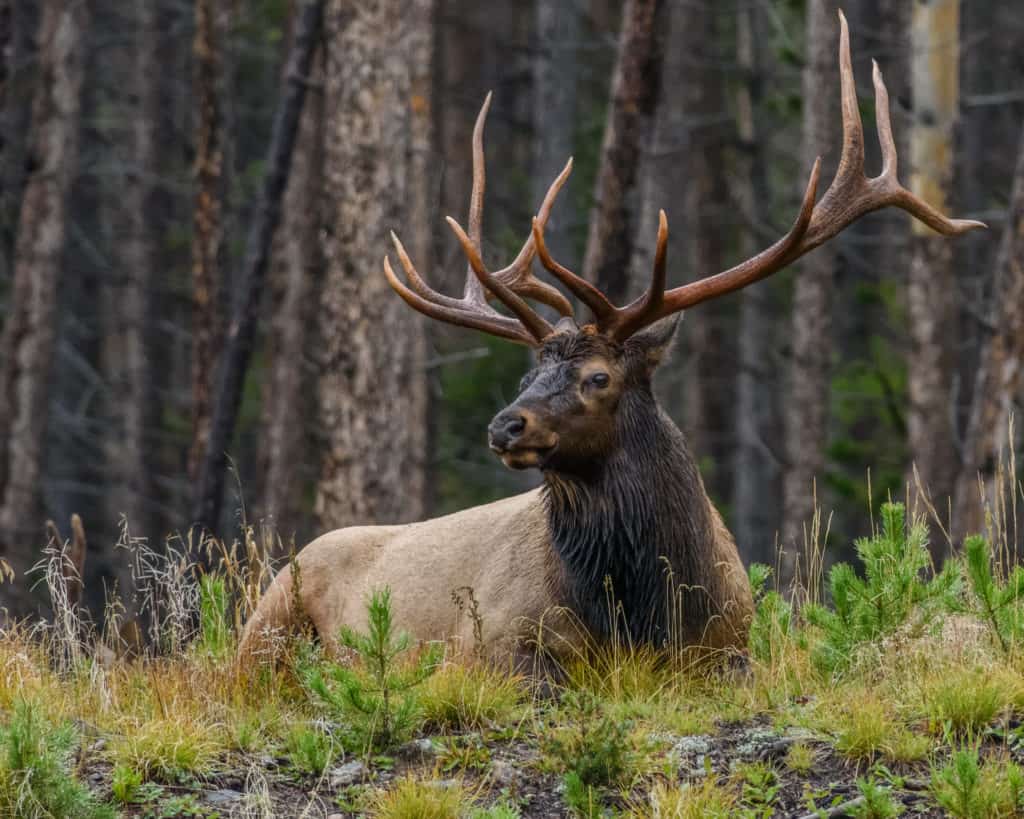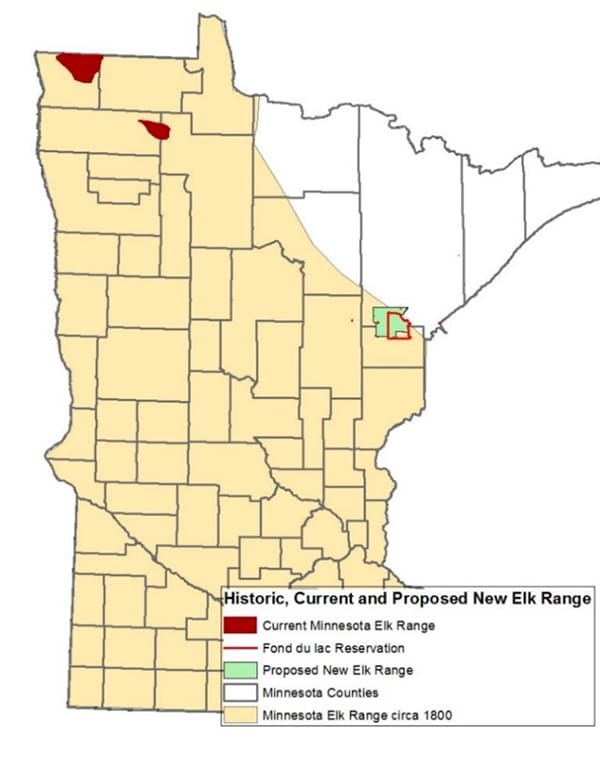
The Fond du Lac Band of Lake Superior Chippewa has submitted a proposal to the Minnesota Department of Natural Resources to reintroduce elk in and around the band’s reservation near Cloquet. It would start with relocating 100-150 animals from northwestern Minnesota to the area over several years, beginning in 2025.
Elk were spread across what is now the state of Minnesota before European settlement, when they were wiped out by hunting and habitat loss. Today, they are only found in a small but carefully managed area in northwestern Minnesota. Known as omashkooz in Ojibwe, elk were historically important to the tribe’s culture and food supply.
“The Band’s Reservation Business Committee believes restoring a wild elk population to areas where band members retain their historic treaty rights is in the Band’s best interest,” says Fond du Lac Tribal Chairman Kevin DuPuis Sr. “Elk have historically been, and continue to be, an intrinsic part of our culture and traditions.”

The proposal comes after several years of study. Partners including the University of Minnesota, DNR, and tribes have assessed the feasibility and public opinion. Parts of the Cloquet Valley, Fond du Lac, St. Croix, and Nemadji State Forests have been identified as potential habitat. Polling has found strong support for reintroducing the animals from residents and land-owners.
More room to roam
While elk in northwestern Minnesota live among large agricultural fields, and frequently come in conflict with crop producers over the animals’ grazing, Fond du Lac says there is not the same level of agriculture in the area where they would reintroduce them. The state maintains a small population in the northwest because of problems with other land uses. Fond du Lac proposes to let the state send animals above the established population goal to the new area for relocation.
The tribe touts numerous possible benefits from the reintroduction project. It would let the DNR keep the northwestern herd at its target size without hunting, provide another population to reduce the risk of disease or something else wiping out the animals in the state, and could be a significant tourist attraction. Once the elk are fully restored and the population is large enough, hunting for tribal and nontribal members could be allowed.
Elk are also an adaptable species that can live in many kinds of habitat and conditions. The tribe says this makes them good candidates for restoration in the face of ongoing climate change. Elk have already been reintroduced in other nearby states. Lower Michigan is home to about 1,200 animals, and a herd near Clam Lake, WI is estimated at nearly 400, with a long-term goal of 1,700 animals.
Fond du Lac says several years of study and planning will be necessary before reintroduction begins in northeastern Minnesota.
More information:
- A proposal to return elk to northeast Minnesota (PDF) – Fond du Lac Band of Lake Superior Chippewa
- Tribe proposes restoring elk to northeastern Minnesota – MPR News
- Elk management – Minnesota DNR
- Northeastern Minnesota Elk – Feasibility Study – University of Minnesota

